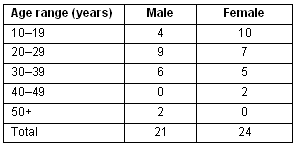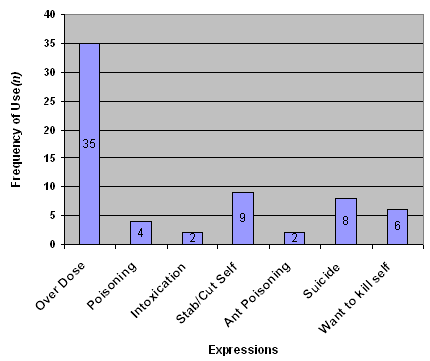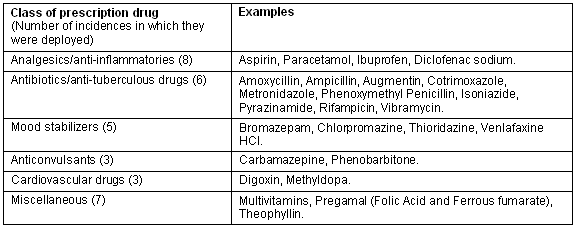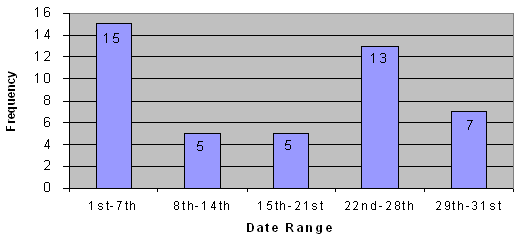Introduction
The word suicide derives from a synthesis of Latin words suî (of himself) and caedêre (to kill)1. Attempted suicide is self-harm with intent to kill.
Worldwide, suicide is the third most common cause of death in adolescents and young adults2. Suicide attempts outnumber successful suicides by as much as 200:1. Generally women make more attempts than men but successful suicide is four times more common in men3,4. Professional women, including physicians, have higher suicide rates than professional men4,5. Native Americans have much higher suicide rates than blacks and Hispanics in the USA5. Divorced, widowed, and separated individuals have higher suicide rates than married people4,6.
Suicide is more common, particularly in men of all ages, in rural areas compared with urban areas of Australia7 and the USA8. A number of studies from different countries have suggested that farmers have a particularly high suicide rate9.
Many factors are associated with suicide but the common denominator seems to be depression and emotional instability3,4,5, where the affected individual sees death as the only way out of what ever s/he considers to be the problem.
Mental illness and socioeconomic status are also factors to consider when assessing suicide risks. People with history of mental illness and a high income are at greater risk of committing suicide than their lower income counterparts, probably because the rich feel more ashamed, vulnerable, and stigmatized by their perceived failure10.
One study found that the relative risk of suicide in men with AIDS aged 20-59 years was 36 times that of men of the same age without this diagnosis and 66 times that of the general population11. AIDS is thus a recognized significant risk factor for suicide11,12.
There are no research reports on suicides and attempted suicides in Namibia. However, some records do show that the populace recognizes it as a problem. A lack of sufficient counselling for people infected with HIV/AIDS was one of many factors contributing to the high suicide rate in the North of Namibia, according to students in the Oshana region13. Guchu, in his outcry for the impact of HIV/AIDS on death rates in Namibia, calls on the communities to become actively involved as the situation was seen to be very serious14. This gained more credence when Secure the Future15 noted that the availability of lay counsellors will provide some data on the increasing incidence of suicide among young people, which is suspected to be linked to HIV infections.
Study setting
The setting for this study was St Mary's Hospital in Rehoboth which is approximately 87 km south of Windhoek (capital of Namibia) along the highway to the Republic of South Africa. With its three feeder clinics, St Mary's Hospital is the only hospital catering for a district with a population of approximately 44 000 people. Approximately 36 000 people live in the municipal area (where St Mary's Hospital is located) while the remainder are in the Rehoboth Gebiet (the surroundings of Rehoboth which are mainly in the form of farm settlements and rural villages). Like most of Namibia, the area is a rural one, with a population density of 4 persons per square kilometre16. Agriculture is the dominant industry. Although Rehoboth is a rural town, it is a vibrant community with most inhabitants in the low and middle income-earning brackets.
There is great understanding between public and private sector doctors in Rehoboth. Both professional groups admit patients into St Mary's Hospital. All emergency patients go first to the outpatients department (OPD), which serves as the emergency department of the hospital, from where the appropriate doctor is called in to see the patient. All the doctors are generalists; the nearest specialists are in Windhoek.
The aim of this study was to describe existing management modalities for suicide and attempted suicide in Rehoboth and to reflect on the findings in order to highlight areas for improvement. Prior to this, there has been no specific study on suicide in Rehoboth.
Methods
This was a retrospective descriptive study using chart reviews. A review was performed on the past records of patients who attended St Mary's Hospital, Rehoboth and were diagnosed and treated for suicide and/or attempted suicide during the period 1 January to 31 December 2001. This was performed by extracting all the outpatient and in-patient records for the period and reading through them in search of the listed reasons for consultation. In the case of in-patients, their final discharge summaries were also studied. Both private and public patients' records were included.
The records of the following patients were included in the study:
- Patients 10 years of age and older with a record of suicide or attempted suicide.
- Patients who admitted that they had attempted suicide.
- Patients where relatives and/or friends implied or stated that an act of suicide had been intended.
- Patients who refused to communicate, after an apparent failed suicide attempt.
- Patients with a history of obvious emotional or mental health problems around the time of an indeterminate act of possible attempted suicide.
- Patients with a questionable history of suicide but with a previous history of attempted suicide.
Records of the following class of patients were excluded:
- Age less than 10 years.
- Geriatric patients of older than 70 years who were on the same drugs as the ones used for the questionable event and where there was a confounding element of dementia or cognitive impairment.
- Where patients and their relatives clearly stated that there was a mistake in the counting and taking of medication.
Written permission was obtained from the Principal Medical Officer, St Mary's Hospital and the Head of the District Health Coordinating Committee, Rehoboth, before the study was carried out.
Results
The total number of OPD and admitted patient records for the period under review was 12 910.
Records of 45 patients with suicide and/or attempted suicide were found, of which 53% were female and 47% were male (Table 1).
Table 1: Age and sex distribution for suicide/attempted suicide (n = 45)

A majority (51%) of patients were admitted to hospital, while 19 (42%) were seen as out patients and sent home, and 3 (7%) were referred out. In only 3 of the 45 patient records was there evidence of referral to social welfare services prior to discharge.
There were no deaths among those who were admitted to Rehoboth. Out of the three patients who were referred to Windhoek, one of these died at the referral unit.
In terms of associated conditions, 3 patients were noted to be pregnant, one each was found to have diabetes mellitus and pulmonary TB respectively, and none were noted to be HIV positive.
Only five patients, out of the 45 studied, had reasons clearly stated in their records for their attempted suicide, all related to domestic problems, viz. 'problems at home' (3), 'upset at home' (1), and 'disagreement with daughter at home' (1).
A range of descriptions for suicide was used in the records studied (Fig 1).

Figure 1: Descriptions used for suicide/parasuicide in patients' files. Note that the same patient record could have more than one expression concurrently.
The most common methods of committing or attempting suicide were by using prescription drugs (63%), self-inflicted knife wounds (26%) and chemical poisons (11%).
Knives were used to cut the wrists (6), the throat (1), the head (1), and the vagina (1). All the knife users were males except a 40-year-old woman who attempted suicide by cutting her vagina.
Of the four patients who used chemicals, one drank crushed batteries while the others swallowed ant poison.
The drugs used in the suicide attempts are listed in Table 2.
Table 2: List of drugs used in suicide attempts

The distribution of suicide acts across the months in the year as well as the range of time in the month were also studied (Table 3, Fig 2).
Table 3: Distribution of suicide attempts over the year


Figure 2: Timing of suicide attempts within each month.
Discussion
The total number of suicide cases for the period studied was 45. Considering the fact that all patients attended St Mary's Hospital, this represents an incidence of 102.3 suicide and attempted suicide cases per 100 000 population. This was considered to be high. However, out of this, there was one death, giving a rate of 2.3/100 000 which is lower than international and regional figures17,18. This may be because it is a rural area; national figures are not separated into urban versus rural, whereas it could be postulated that urbanisation may be associated with greater risk of suicide. However, the evidence internationally suggests that people in rural areas, particularly men, are at greater risk of suicide7-9 than their urban counterparts.
The WHO listed New Zealand in 1996 as having the highest suicide rate in the world with 40.9/100 000 for males and 10.8/100 000 for females18. Southern Africa was reputed to have the highest rate in Africa with an average of about 5-7 per 100 00018. There is a suggestion that this relates to the greater degree of development and urbanisation in South Africa. The possibility is that the rural-urban gap may be much smaller in Namibia. This is in contrast, for example, with the UK, where a recent study found that the suicide rate in a poor rural area (Cornwall) has increased disproportionately over the last 90 years19. It is difficult to postulate the causes for rural-urban differentials in suicide rates; while a range of possibilities have been suggested, an Australian study suggests rural people have significantly more reasons for living than their urban counterparts20.
It is recognised that the Rehoboth figures do not include the small but possibly significant number of suicide cases which might not be reported to the authorities (Department of Health or police).
The involved persons were mainly healthy adolescents and young adults, which fits into the global pattern5,15,18,21. The traumatic versions involved mainly healthy men. Similar observations were made by El Obeid et al22 while looking at Namibia as a whole. The reasons for suicide in Rehoboth point to domestic problems.
It is also interesting to note that HIV/AIDS was associated with an increased rate of suicide in global literature12,23, but it did not seem to be so in the Rehoboth study. This would need to be verified as there was no specific process of recording HIV status for suicide or attempted suicide cases and this study did not search for the sero-status of attempted suicide patients beyond the patient records.
The absence of firearms as a method of suicide is interesting. In Australia, in the period 1979-1998, the most frequent method used by men was firearms (27%), followed by hanging (26%), carbon monoxide (20%), and poisoning (12%)4. The most common methods used by Scottish farmers were similar9. This may be a culturally-related difference.
That only three of the patients (7%) were referred suggests that local health professionals felt competent to handle the majority of patients, except where there were obvious life-threatening complications. It is of concern, though, that only three of the 45 patients were apparently reported to the Intake Officer of the Developmental Social Welfare Services Department. This unit is supposed to follow up each case to deal with causative factors. In addition, 42% of the patients were treated and discharged as outpatients without reassuring evidence that they would not try it again, possibly more successfully. This is an area that calls for more research, and which should focus on following the attempted suicide patients to record the recurrence rate and outcome of such recurrences. It was noted that two patients out of the total of 45 attempted suicide cases actually repeated the attempts but neither was successful.
The fact that the death rate from attempted suicide in Rehoboth is rather low may suggest that the intervention by the hospital, which is fortunately centrally located, is sufficient in most situations. Actual death rates as percentage of attempted suicide rates are difficult to obtain, just as it is quite difficult to confirm whether a suicidal person (especially after intense resuscitation efforts) really wanted to die or just call attention to him or herself.
Rehoboth is a rural community where trauma of all sorts tends to increase with money in circulation, especially if it goes along with weekends and/or public holidays24. A closer look at the timing of suicides (Figure 2) reveals a major peak in attempted suicide, which corresponds with the days on which teachers and the majority of low income earners are paid. That peak statistically lingers on into the end of the month when the rest of higher income earners are paid. The habit of most Rehobotherns is that once some people are paid, virtually everyone (employed or not) gets involved in the celebration as part of their communal lifestyle. One might have expected this to be the time when suicide is lowest, but Agerbo et al10 and Jones6 suggest that the majority of suicides are signs of expectations not met. The peaks in March and December months (Table 3) may relate to the Easter and Christmas holiday periods. The rest of Namibia seems to experience a similar association of increased suicide rates to increased festivity/holidays and more money in circulation16,24.
A significant difficulty in this study was the fact that there was no uniformity of nomenclature in the records. Only eight out of 45 patients had their diagnoses described as suicide or attempted suicide. This not only made the statistics difficult to access, it also served to hide the problem. This problem was further compounded by the finding that the in-patient discharge diagnosis and cause of death codes (numerical order), which is the reference document for coding of diagnosis in health institutions in Namibia, did not have the word suicide represented in it at the time of conducting this research.
The importance of uniformity of nomenclature in science cannot be overemphasized. At statistical level, the researchers could not find any record of suicide and/or attempted suicide in official documents, not because there were no cases, but because there were other expressions for the same condition. Some of those expressions trivialize the condition and reduce the seriousness of interest and reporting sequences that should have taken place. At the national level, the health information system should reconsider this issue with the view to eliminating euphemisms from this serious medical condition. 'Suicide' or 'attempted suicide' should have their deserved places in the diagnostic codes for health care providers and statisticians to use. Utilization of The International Classification of Diseases, 10th Revision (ICD-10) is recommended for this purpose25.
Conclusion
A retrospective study of suicide and attempted suicide, carried out in rural Namibia, identified a high incidence of attempted suicide, but a lower than expected death rate from suicide.
The utilization of uniform nomenclature for recording suicide events was also identified as a priority for health managers. It is hoped that implementation of such an approach may assist Namibia, and other rural regions with similar recording ambiguities, to be alert to the actual incidence of suicide and para-suicide, and to develop appropriately coordinated strategies to reduce their impact on rural communities.
References
1. Kirkpatrick EM, Schwarz CM, Davidson GW, Seaton MA, Simpson J, Sherrard RJ. Chambers 20th Century Dictionary. Edinburgh: W & R Chambers, 1983; 1294.
2. Dworkin PH. Mental health issues: suicide. In: National medical series for independent study (NMS). Pediatrics. Philadelphia, PA: Williams & Wilkins, 1996.
3. Taylor S, Field D. Suicide and self-harm. Sociology of health & health care. 2nd Edn. Oxford: Blackwell Science, 1997; 165-168.
4. Australian Bureau of Statistics. Suicides, Australia, 1921-1998. Cat. no. 3309.0, ABS. Canberra, ACT: Australian Bureau of Statistics, 2000.
5. Scully JH. Psychiatry. National Medical Series for Independent Studies. Hong Kong: William & Wilkins, 1996.
6. Jones RA. Suicide. Emile Durkheim: An introduction to four major works. Beverly Hills, CA: Sage Publications, 1986; 82-114.
7. Taylor R, Page A, Morrell S, Harrison J, Carter G. Social and psychiatric influences on urban-rural differentials in Australian suicide. Suicide and Life Threatening Behaviour 2005; 35: 277-290.
8. Singh GK, Siahpush M. Increasing rural-urban gradients in US suicide mortality, 1970-1997. American Journal of Public Health 2002; 92: 1161-1167.
9. Stark C, Gibbs D, Hopkins P, Belbin A, Hay A, Selvaraj S. Suicide in farmers in Scotland. Rural and Remote Health 6: 509. (Online), 2006. Available from: http://rrh.org.au (Accessed 23 October 2006).
10. Agerbo E, Mortensen PB, Eriksson T, Qin P, Westergaard-Nielsen N, Gunnell D. Richer people with mental illness are more likely to commit suicide. BMJ 2001; 322: 334-335.
11. Khouzam HR, Donnelly NJ, Ibrahim NF. Psychiatric morbidity in HIV/AIDS Patients. Canadian Journal of Psychiatry 1998; 43: 51-56.
12. Marzuk P M, Tieney H, Tardiff K et al: Increased risk of suicide in persons with AIDS. JAMA 1988; 259: 1333-1337.
13. Nicanor N, Speelman H. Discovering science: a primary course for Namibia. Grade 6. Windhoek: New Namibian Books and Heinemann, 1997; 116.
14. Guchu W. Namibia: suicide and HIV-Communities need to be involved. New era (Windhoek). (Online) 2006. Available: http://allafrica.com/stories/200610110632.html (Accessed 24 October 2006).
15. Bristol-Myers Squibb. Secure the future: building national lay counseling capacity in North West Namibia. (Online) 1999. Available: http://www.securethefuture.com/ (Accessed 16 October 2004).
16. Rehoboth District Health Management Team. Basic population data for the time April 2000 - March 2001. Annual Report 2000-2001. Rehoboth: Rehoboth District Heath Management, 2001.
17. Johnson GR, King EG, Potter LB. Suicide among Adolescents and young Adults: a Cross-national comparison of 34 Countries. Suicide and Life-Threatening Behaviour 2000; 30: 74-82.
18. Hider P. Youth suicide prevention by primary healthcare professionals: A critical appraisal of the literature. New Zealand Health Technology Assessment: Report 4. (Online) 1998; p. 22. Available: http://nzhta.chmeds.ac.nz/publications/nzhta4.pdf. (Accessed 11 December 2005).
19. Hill SA, Pritchard C, Laugharne R, Gunnell D. Changing patterns of suicide in a poor, rural county over the 20th century: a comparison with national trends. Social Psychiatry & Psychiatric Epidemiology 2005; 40: 601-604.
20. McLaren S, Hopes LM. Rural-urban differences in reasons for living. Australian and New Zealand Journal of Psychiatry 2002; 36: 688-692.
21. Schmidtke A, Weinacker B, Apter A, Batt A, Berman A, Bille-Brahe U et al. Suicide rates in the world (Update). Online (1998). Available: http://www.uni-wuerzburg.de/IASR/suicide-rates.htm (Accessed 10 December 2005).
22. El Obeid S, Mendelson J, Lejars M, Forster N, Brule G. Poisoning and Alcohol Intoxication & Traumatism. Health in Namibia: Progress and Challenges. Windhoek: Namibia Ministry of Health, 2003; 80.
23. Mann JJ. The Neurobiology of Suicide. Nature Medicine 1998; 4: 25-30.
24. The Namibian. Six Suicides over holiday period: The suicide rate in Namibia rose over the festive season with police reporting a number of cases from various regions. (Online), 4 January 2001. Available: http://www.namibian.com.na/2001/January/news/headlines.html (Accessed 24 October 2006).
25. National Center for Health Statistics. Locating, understanding & presenting youth suicide data. A workshop of the National Center for Suicide Prevention Training. (Online) no date. Available: http://www.ncspt.org/courses/course1A-self/id132.htm (Accessed 30 May 2006).


